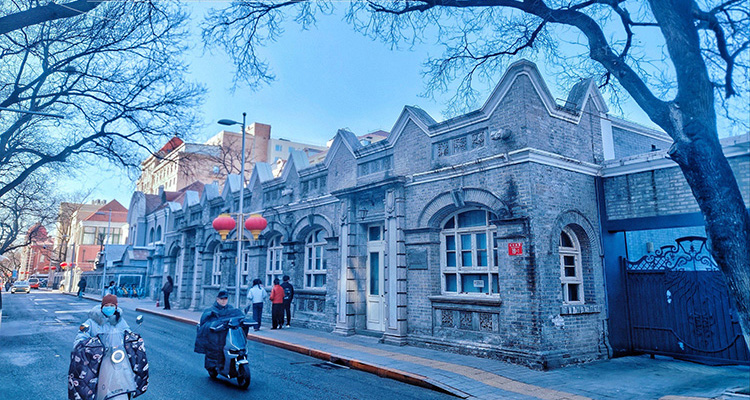Dongjiaomin Lane: A Century-Old Hutong Shopping Stroll!
Dongjiaomin Lane, stretching 1.5 kilometers in Beijing’s Dongcheng District, is the city’s longest hutong. Walking here feels like stepping into a living history book. Once home to embassies during the late Qing and early Republic eras, this historic lane now perfectly blends European architecture, local culture, and modern shopping. Under the shade of plane trees, light dances on the cobblestones while boutique shops and artisan studios showcase both traditional Beijing crafts and contemporary designs.
1. Shopping Delights: Timeless Finds in Historic Buildings
Dongjiaomin Lane offers a unique shopping experience where history meets modern creativity. Unlike conventional malls, the shops here are housed in renovated historic buildings, each item telling its own story.
The lane is lined with distinctive boutiques, ranging from vintage clothing stores to handcrafted artisan studios. On weekends, small markets pop up selling handmade soaps, ceramics, and other one-of-a-kind items. Prices are reasonable, offering everything from accessible handcrafted goods to exquisite designer pieces, catering to different budgets.
Here, visitors can discover truly unique souvenirs instead of mass-produced tourist items, making each purchase feel like a journey through time.

2. Strolling Through European-Style Streets
The layout of Dongjiaomin Lane naturally encourages leisurely exploration. Wide tree-lined streets allow for a relaxing walk as you admire the eclectic architectural styles—from Gothic spires to Baroque facades.
Clear signage ensures you won’t get lost: start at Chongwenmen Station Exit E and stroll toward Zhengyi Road. Highlights include the Belgian Embassy former site with its red European-style building and the French Post Office with its ochre walls, all serving as natural landmarks.
The architectural mix creates a picturesque European-style corridor in the heart of Beijing, perfect for photography and casual sightseeing.
3. Culinary Adventures: From Old Beijing Snacks to International Flavors
Food lovers will be delighted at Dongjiaomin Lane. Traditional Beijing snacks like zhajiangmian and douzhi are available alongside international cafés and restaurants, perfect for an afternoon break.
Popular choices include hidden cafés and Western-style restaurants, while historic establishments serve authentic Beijing cuisine. Nearby, Aohua Restaurant offers hearty Tianjin dishes like jianbing guozi and garlicky beef cubes, highly praised for flavor and portion size.
Most shops accept international credit cards and mobile payments, making it convenient for foreign visitors.

4. Cultural and Leisure Highlights: Photo Ops Galore
Dongjiaomin Lane is essentially an open-air museum of historic architecture. Must-see spots include St. Michael’s Catholic Church, where pale gray bricks contrast beautifully with climbing roses, often hosting wedding photoshoots.
Other highlights:
- French Post Office: Weathered archways with “1901” etched into the walls.
- China Court Museum: Greek-style columns providing romantic photo opportunities for couples.
- Belgian Embassy site: Red European building and lawns reminiscent of a European courtyard.
Morning and late afternoon light create the perfect photography conditions along the lane, making every shot Instagram-worthy.

5. Special Events: A Blend of Past and Present
Dongjiaomin Lane comes alive during seasonal events. The POWA Market has been hosted at the Belgian Embassy site, with dozens of stalls lining the shaded avenues. Beyond shopping, visitors can enjoy live music, vintage swing dance, and yoga sessions, bringing new energy to historic surroundings.
In summer, sunlight filters through plane tree leaves, casting golden patches across the facades. At dusk, newsstands light up, and locals strolling or playing with children create a lively, authentic hutong atmosphere.
6. Modern Comfort in a Historic Setting
Though historic, Dongjiaomin Lane provides modern conveniences. Public Wi-Fi is widely available, while benches, street lamps, and signage are thoughtfully designed to complement the historical environment.
For a more comprehensive experience, Dongjiaomin Lane Hotel offers dining, rest areas, and other facilities for travelers seeking convenience without losing historic charm.
7. Practical Information: Planning Your Visit
- Location: Dongjiaomin Lane, Dongcheng District, Beijing (1.5 km connecting Chongwenmen and Zhengyi Road)
- Transport:
- Subway: Lines 2 or 5 to Chongwenmen Station, Exit E
- Bus: Several routes nearby
- Driving: Not recommended due to limited parking; public transit preferred
- Opening Hours: Street open all day; shops 10:00–20:00; restaurants vary, e.g., Quanjude Tiananmen until 19:00
- Recommended Visitors: History enthusiasts, photographers, culture explorers, couples, families
Afternoon sunlight casts long shadows of pagoda trees, jasmine tea drifts from old teahouses, and cyclists’ silhouettes glide past newlyweds in wedding attire. This is the charm of Dongjiaomin Lane—a perfect harmony of history and contemporary life.
Bring a relaxed mindset and create your own memorable journey in Beijing’s most romantic hutong.


